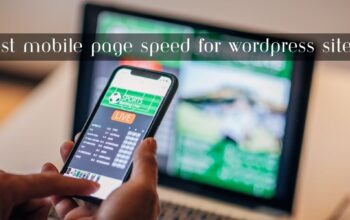Turning a WordPress site into a mobile app involves creating a mobile app version of your website that users can download and install on their mobile devices. There are several approaches you can take to achieve this, depending on your needs and budget. Here’s a general guide to help you get started:
- Define Your App’s Purpose and Features:
- Determine the primary purpose of your mobile app. What content or functionality from your WordPress site do you want to include in the app?
- Identify the key features and user interactions your app should offer.
- Choose a Development Approach:
- There are different methods to convert a WordPress site into a mobile app, each with its pros and cons:
- Native App Development: Building a native app for Android (using Java or Kotlin) and iOS (using Swift or Objective-C) from scratch. This approach offers the best performance and user experience but can be the most time-consuming and expensive.
- Hybrid App Development: Creating a hybrid app using technologies like React Native, Flutter, or Apache Cordova. Hybrid apps use web technologies (HTML, CSS, JavaScript) and can be more cost-effective while providing decent performance.
- WordPress Plugins: Some plugins, like AppPresser and Wapppress, allow you to convert your WordPress site into a mobile app without extensive coding. These plugins may have limitations in terms of customization and features but are often the quickest and most budget-friendly option.
- There are different methods to convert a WordPress site into a mobile app, each with its pros and cons:
- Install and Configure Necessary Plugins:
- If you choose a WordPress plugin-based approach, install and configure the relevant plugin. Each plugin may have its own setup and customization options, so follow the documentation provided.
- Design the App Interface:
- Regardless of the approach, you’ll need to design the user interface (UI) of your app. This includes creating layouts, choosing colors, and designing icons and graphics that match your brand.
- Ensure that the app’s design is responsive and optimized for various screen sizes and orientations.
- Integrate WordPress Content:
- Connect your app to your WordPress website to fetch and display content. Ensure that posts, pages, images, and other media are accessible and load quickly within the app.
- Consider using RESTful APIs or custom endpoints to facilitate data retrieval and synchronization between your site and the app.
- Implement User Authentication:
- If your WordPress site has user accounts or requires login functionality, implement a secure authentication system within the app. Users should be able to log in and access their profiles.
- Optimize Performance:
- Optimize your app’s performance by minimizing unnecessary data requests, optimizing images, and using caching mechanisms to improve loading times.
- Test on Multiple Devices:
- Test your mobile app on various devices, including different smartphones and tablets, to ensure that it functions correctly and looks good on different screen sizes.
- Publish to App Stores:
- If you’re developing a native or hybrid app, follow the guidelines of the respective app stores (Apple App Store, Google Play Store) to publish your app. You’ll need developer accounts for each platform.
- Promote Your App:
- Promote your mobile app to your website visitors and existing users through various channels, such as email newsletters, social media, and your website.
- Update and Maintain:
- Regularly update and maintain your mobile app to fix bugs, improve performance, and add new features. User feedback and analytics data can help you make informed updates.
Remember that creating a mobile app is a significant project that requires careful planning and development. The choice between a native, hybrid, or plugin-based approach depends on your specific requirements, budget, and development resources. Be prepared for ongoing maintenance and updates to ensure your app continues to meet user expectations.








